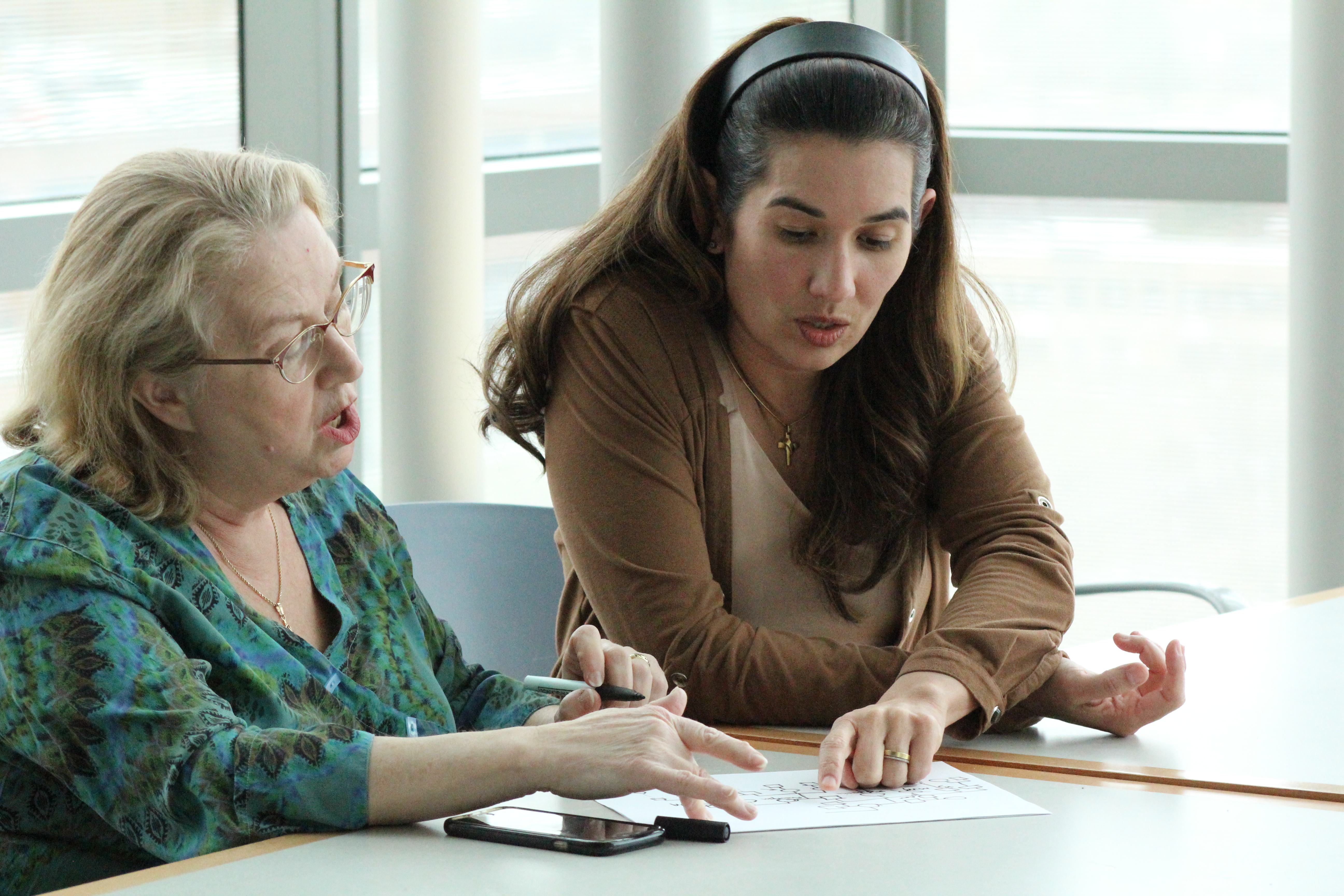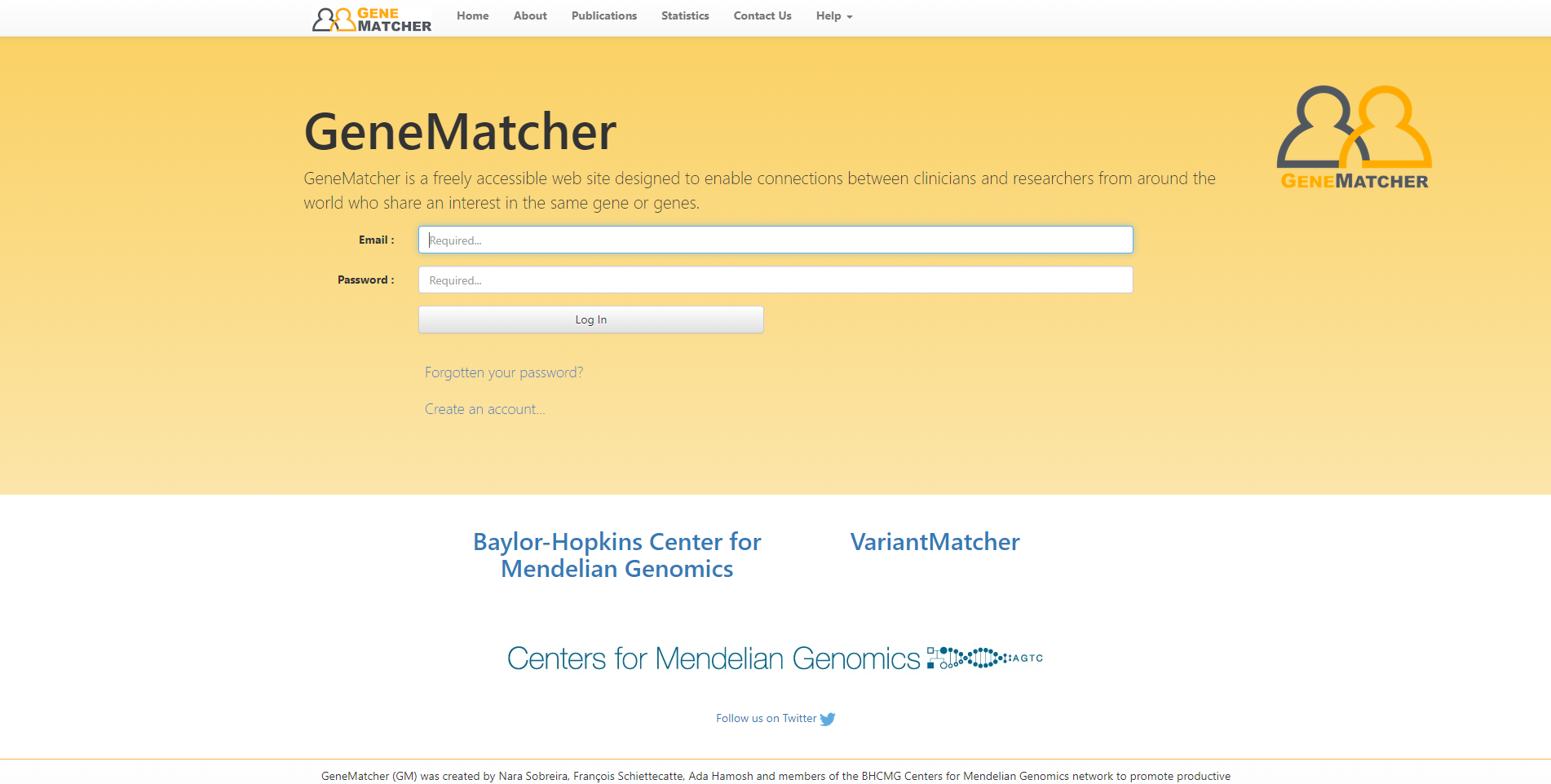“It’s in my DNA” — a cliché many people use to describe characteristics so innate within themselves that they must be etched onto their genetic code. But the cliché is often used incorrectly. Our genetic code (and the way it’s read) likely does not play a role in a preference for mysteries or other personality traits, but the coded instructions found in every cell guide other characteristics, including height, eye color and risks for certain diseases.
While there are millions of genetic variations and mutations, researchers have only found a percentage of genetic variations that influence our health. Researchers dedicate their careers to helping families find the genetic culprits in rare conditions. Ada Hamosh and Nara Sobreira are two of those researchers.
Over the years, some cases have tested these leading scientists’ resolve, but their combined ingenuity and experience have paid off with answers for hundreds of families with genetic conditions. To help move the field forward, they developed an online tool that is used around the globe to speed the discovery process and connect the work of genetic investigators. The innovative tool, GeneMatcher is the result of the mysteries of the genetic code and geneticists' quests to solve them.
The Code in Question
DNA is made up of four molecules, known as nucleotides, that link like a string of pearls in a long strand that zips together with a complimentary strand. The strands twist to become the well-known double helix of DNA. It coils around itself even further to become chromosomes, linear structures divided into zones that indicate each of our genes.
DNA is one of the biggest molecules in the human body. In fact, stretched out, all of the DNA in one person’s cells would be twice the diameter of the solar system, but compacted it would fit into a space smaller than a needle point. This macromolecule contains a macro amount of information in the genome.
The human genome is a person’s total amount of DNA. Its approximately 20,000 genes and 6 billion letters make up the entire genetic book of who we are. But only about 1.5% of the text, the exome, is translated into proteins that turn into tangible features.
In the exome, DNA unzips and is matched nucleotide-by-nucleotide with a slightly different but still complementary strand of nucleotides called messenger RNA. This strand of RNA is then translated into a connected set of amino acids that fold together to make proteins that carry out functions from energy production and chemical messaging to tissue formation and more.
In an ideal world, this process, known as the central dogma, would operate perfectly. In the real world, however, this process is notoriously varied. DNA mutations occur when a nucleotide is deleted, changed or added to the DNA sequence. The changes are often unnoticed as they don’t result in physical changes, but sometimes these mutations, more commonly referred to as variants, can have significant effects on physical characteristics.
In many cases, clinicians can identify the genetic condition based on the physical characteristics present in the patient. In rare cases, the genomic culprit is more elusive. “When you sequence an exome you get about 80,000 variants, and you have to narrow it down to one to find what causes a disease,” explains Sobreira.
The DNA Detectives
In genetics clinics across the country, people with a range of seemingly inexplicable physical characteristics work with geneticists, genetic counselors and other clinicians to find answers to the root cause of their conditions. At Johns Hopkins, geneticists Hamosh and Sobreira have worked in the field for years, identifying the genetic variants that underlie patient conditions. The range of symptoms for genetic conditions is vast and can include anything from a recurring rash to developmental delays. Some symptoms have lifelong implications that require extensive coordination of care across medical disciplines. In addition to their detective roles, Hamosh and Sobreira serve as their patients’ liaison, connecting the spokes of many types of medical care on the wheel of treatment.
“It is almost as if we are family medicine doctors,” says Sobreira, assistant professor of genetic medicine and pediatrics. “We work very closely with orthopedic specialists, dermatologists and other clinicians not only to help determine the best treatment plan, but to ensure that patients stay on it.”
Hamosh and Sobreira see patients about once a month. In the bustling genetics clinic, they zip from patient to patient. Hamosh, the Dr. Frank V. Sutland Professor of Pediatric Genetics and a professor of genetic medicine, is an experienced leader in the field. In the early 2000s, after working under famed geneticist Victor A. McKusick, Hamosh became the clinical director of the McKusick-Nathans Institute of Genetic Medicine and scientific director of the Online Mendelian Inheritance in Man (OMIM®). Sobreira, an assistant professor of genetic medicine and pediatrics early in her career, is shaping up to be a strong leader as well and is often tapped by media as an expert on genetics. In the clinic, the stern determination needed to be an effective leader softens into the compassion patients need from effective caregivers.
Once in the examination room, it is clear that their mission to find answers for each family is personal, no matter how long it takes. “For some patients answers can take weeks, others decades,” says Hamosh.
On the Case

Hamosh and Sobreira work with genetic counselors to take a detailed family history, often drawing pedigree charts themselves, and determine whether or not a genetic condition may exist, which can prompt a range of genetic testing options.
Several genetic tests are available for different uses, and sequencing of the exome — the small percentage of the genome that encodes proteins — gives the most comprehensive results. In sequencing tests, geneticists look for changes in the genetic sequence that differ from the standard reference genome. When people present with an unexplained physical characteristic, medically known as the phenotype, exome sequencing begins the search for the genetic code that explains it, known as the genotype.
Sequencing has proven revolutionary for the field of genomics, but results are not always definitive. Many times, patients undergo exome sequencing and are successfully diagnosed with a genetic condition. In some cases, tests lead doctors to a dead end. Everyone has multiple variations or alterations in their genotypes, but for patients, only one of those changes is responsible for the phenotype in question. In some cases, the genetic conditions are so rare that it is difficult to definitively conclude that the genetic alteration is the culprit without finding the same evidence in other patients.
“Clinicians who are interested in a known disease gene or genetic phenotype can use tools such as OMIM to find out more information,” says Hamosh. OMIM is an online database of all known human genes and genetic phenotypes. The catalog was developed by Victor A. McKusick in the 1960s. Under McKusick’s leadership, Hamosh began writing for OMIM in 1996 and became the project’s scientific director in 2002.
Mysteries Solved
For more than a century, scientists and clinicians have made connections about rare diseases serendipitously, hoping their presentations at scientific conferences would catch the eye of another researcher studying a similar population of people. Hamosh and Sobreira were determined to find a better way.
“We needed to build a quick and easy way to connect users with results that can provide the instant gratification that modern technology so often affords us,” explains Hamosh. “That is what GeneMatcher is about.”
Their challenge was to create a solution that allowed for secure data sharing. With new disease discoveries on the line, some investigators don’t want to run the risk of having their data stolen.
Hamosh and Sobreira began brainstorming a tool that connects two people interested in a gene but does not give away data initially, and GeneMatcher began to take form. They partnered with a programmer who was also working with OMIM and poured in data from their own cases. The final result: a program that connects researchers or clinicians confidentially and securely with consent from all parties.

GeneMatcher.org prompts users to create an account and enter a custom name for their submission and a gene of interest. Users can choose to add the type of genetic disorder, family history of the disorder, and matching rules such as whether potential matches have to include the genomic location and whether to match with clinicians, researchers or patients.
While OMIM is a list of known genes and genetic phenotypes, GeneMatcher gives clinicians and researchers a platform to collaborate and identify new genetic phenotypes based on variants in a novel disease gene. Through the website, the collaboration that Hamosh and Sobreira facilitate in the genetics clinic was expanded to allow collaboration around the world. “Collaboration is extremely important in the genetics field,” says Sobreira. “It is a win-win for everyone, and the patient wins the most.”
To scientists, the process is as fast and simple as searching for flights online or creating a social media profile. In a world dominated by easy access and quick results, GeneMatcher stood out as a simple and invaluable tool. “That’s the beauty of GeneMatcher,” says Hamosh, “it works on its own.”
In seven years, GeneMatcher has become a global sensation. As of Jan. 31, over 7,900 people — mostly researchers and clinicians — representing 89 countries use the website. In total, GeneMatcher has had 11,986 unique gene inquiries in 39,748 submissions and boasts 286 publications reporting over 200 novel disease gene discoveries.
Over time, similar tools were developed by other researchers, but GeneMatcher shined as a pioneer for its novelty and ease. Keeping a tight grip on the increasingly antiquated data protection culture, similar websites failed to amass the same following and continued to require users to share larger amounts of data. In GeneMatcher, all a user needs is a gene of interest.
Noticing that similar tools were emerging, the GeneMatcher team expanded on the idea that more connections meant more novel disease gene discoveries by partnering with other services to link connect databases. What started as a simple link between GeneMatcher and a similar platform, Phenome Central, grew to be the Matchmaker Exchange, a federated web of seven genomic discovery platforms. Now instead of searching one database, users can search seven at once. Matchmaker Exchange lists 25 published gene discoveries, 13 of which involved GeneMatcher.
It’s no surprise that GeneMatcher and Matchmaker Exchange have been game-changers in the genomics field, but the implications extend beyond the bench-side. According to Hamosh and Sobreira, patients and families affected by rare genetic diseases are often deeply involved in the research field.
“Patients with diseases that have been identified are very proactive in finding and leaning on each other for support,” says Hamosh. “Families make Facebook groups. Some have even created organizations.” GeneMatcher has been a catalyst behind connecting patients with similar stories. Some patient stories have been featured in national news articles.
For Hamosh and Sobreira, creating the tools is only the beginning. They recently launched Variant Matcher, a matching service where users submit a specific variant rather than a gene of interest. Variant Matcher already has 333 users from 38 countries.
They hope to soon have a second matchmaker to connect databases that focus on variants. The more that connections are formed and the more that data are shared, the greater the possibility for finding the perfect match.